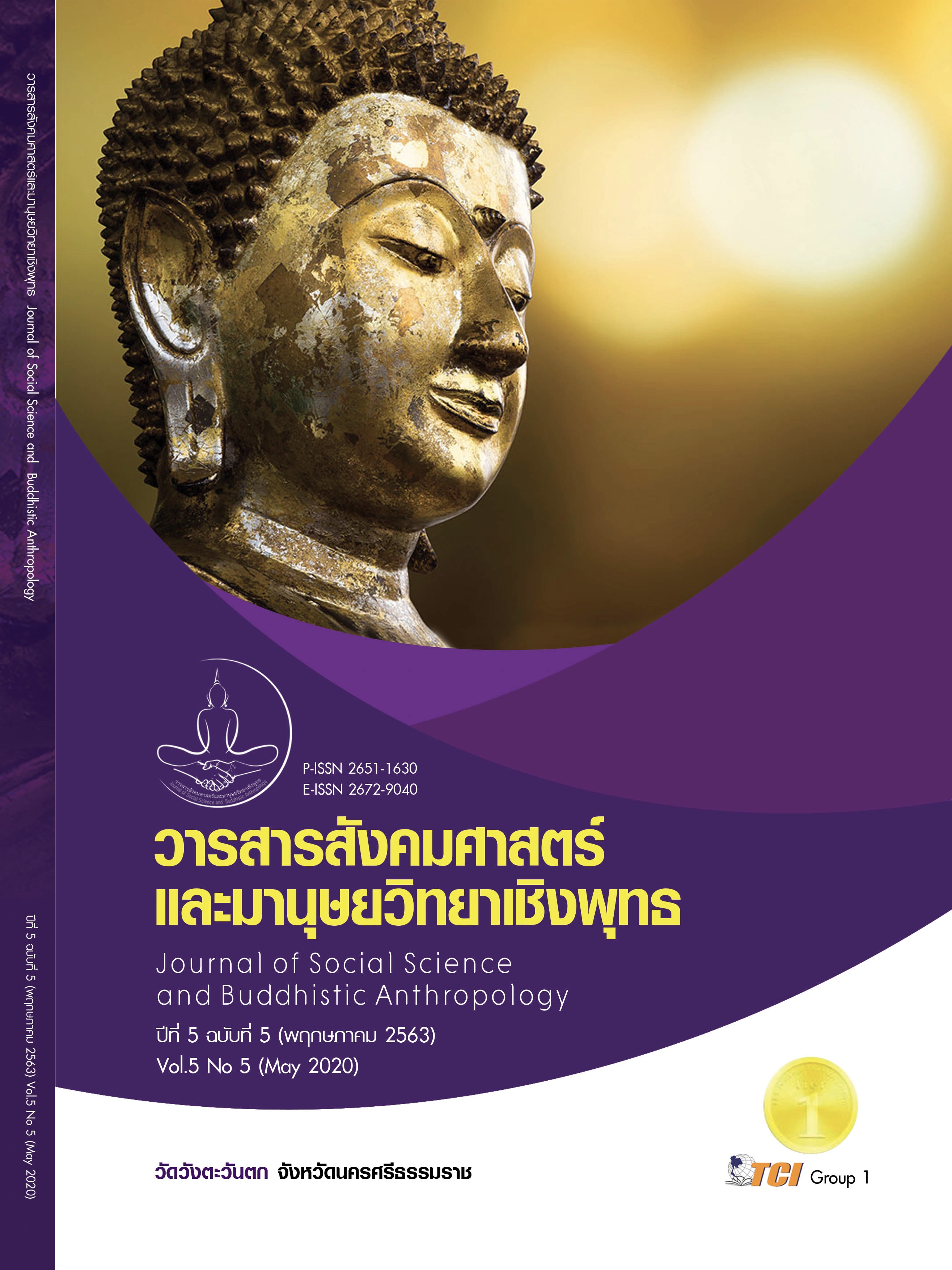THE GUIDELINES IN THE PROPERTY MANAGEMENT BASED ON BUDDHISM OF THE BUDDHISTS IN WIANG HAENG DISTRICT CHIANG MAI PROVINCE
Keywords:
Property Management, Buddhism, Buddhist, Wiang Haeng District, Chiang Mai ProvenceAbstract
This article has 3 objectives which are 1) to study the concept of treasure in Buddhism. 2) to study treasure problems management of Buddhists in Wiang Haeng districts, Chiang Mai province, and 3) to suggest the method how to manage the treasure in Wiang Haeng districts, Chiang Mai province. This is the quantitative research, it is studied by documentary research, field trip, interviewing and presented in a descriptive. The study found that 1) The concept of treasure in Buddhism, treasure means wealth and noble property included goodness or virtue. 1.1) External wealth means things that are considered valuable by social such as money, gold, jewelry, food, clothing, medicine, land and houses or shelter. 1.2) Internal or noble property means the virtue. Many people see the importance of wealth as they should see and touch. But wealth is both a benefit and hidden evil as well. 2) The treasure problem management of Buddhists in Wang Hang districts, Chiang Mai province, For problems were effect from 2.1) Causing people to be lazy in their pursuit of wealth. 2.2) The lack of knowledge about the storage or keep of wealth. 2.3) The bullying. 2.4) Spending in order to do trouble wrong life. 2.5) Being poor from growing economics vegetables. 3) The method how to manage the treasure in Wiang Haeng districts, Chiang Mai province. The Buddhist method of treasure management is to apply The Dhamma Dhammakatha 4,The Power of Baht 4 and The Four Principles of Bhogavibhaga to solve the life problems. The Buddhists can apply to search, keep and spend with principles. Gaining knowledge and understand how to use right living until having acquired and stability in treasure. Using the continuation on a good life that is a beneficial to ourselves and society.
References
จตุรงค์ บุณยรัตนสุนทร. (2546). ความยากจน สถานการณ์และบทบาทขององค์กรพัฒนาเอกชน. กรุงเทพมหานคร: บริษัทเอดิสัน เพรส โพรดักส์ จำกัด.
ประพันธ์ นึกกระโทก. (2557). ทุนทางสังคมกับการจัดการความรู้สู่องค์กรชุมชนพึ่งพาตนเองอย่างยั่งยืนในภาคตะวันออกเฉียงเหนือตอนล่าง. ใน ดุษฎีนิพนธ์พุทธศาสตรดุษฎีบัณฑิต สาขาวิชาพระพุทธศาสนา. มหาวิทยาลัยมหาจุฬาลงกรณราชวิทยาลัย.
พระธรรมปิฎก (ป.อ.ปยุตโต). (2550). กระแสธรรม เพื่อชีวิตและสังคม. กรุงเทพมหานคร: สำนักพิมพ์ธรรมสภาพและสถาบันบันลือธรรม.
พระธรรมปิฎก (ป.อ.ปยุตโต). (2552). พุทธธรรม ฉบับปรับปรุงและขยายความ. กรุงเทพมหานคร: สำนักพิมพ์มหาจุฬาลงกรณราชวิทยาลัย.
พระปริยัติธรรมธาดา (สถิต ถาวโร). (2544). อริยทรัพย์ 7. กรุงเทพมหานคร: โรงพิมพ์มหาจุฬาลงกรณราชวิทยาลัย.
พระพรหมคุณาภรณ์ (ป.อ. ปยุตฺโต). (2550). ธรรมนูญชีวิต. กรุงเทพมหานคร: ธรรมสภาและสถาบันบันลือธรรม.
พระภาวนาวิริยคุณ (เผด็จ ทตฺตชีโว). (2545). คัมภีร์ปฏิรูปมนุษย์. กรุงเทพมหานคร: บริษัท เชอรี่กราฟฟิค.
พระมหานรินทร์ นรากรนิธิกุล. (2545). การศึกษาวิเคราะห์เรื่องอริยทรัพย์ในพุทธศาสนาเถรวาท. ใน วิทยานิพนธ์ศิลปศาสตรมหาบัณฑิต สาขาวิชาพุทธศาสนศึกษา. มหาวิทยาลัยธรรมศาสตร์.
มหาจุฬาลงกรณราชวิทยาลัย. (2539). พระไตรปิฎกภาษาไทย ฉบับมหาจุฬาลงกรณราชวิทยาลัย. กรุงเทพมหานคร: โรงพิมพ์มหาจุฬาลงกรณราชวิทยาลัย.
แสง จันทร์งาม. (2535). พุทธศาสนวิทยา. กรุงเทพมหานคร: ธีระการพิมพ์.
อภิญญา เวชยชัย และกิติพัฒน์ นนทปัทมะดุลย์. (2546). เศรษฐศาสตร์การเมือง (การพัฒนาระบบสวัสดิการสำหรับคนจนและคนด้อยโอกาส : กลุ่มคนจนและกลุ่มเสี่ยงที่ประสบปัญหาทางสังคม). กรุงเทพมหานคร: บริษัทเอดิสันเพรส โปรดักส์ จำกัด.
อุทัย หิรัญโต. (2531). หลักการบริหารงานบุคคล. กรุงเทพมหานคร: โอ. เอส. พริ้นติ้ง เฮ้าส์.








